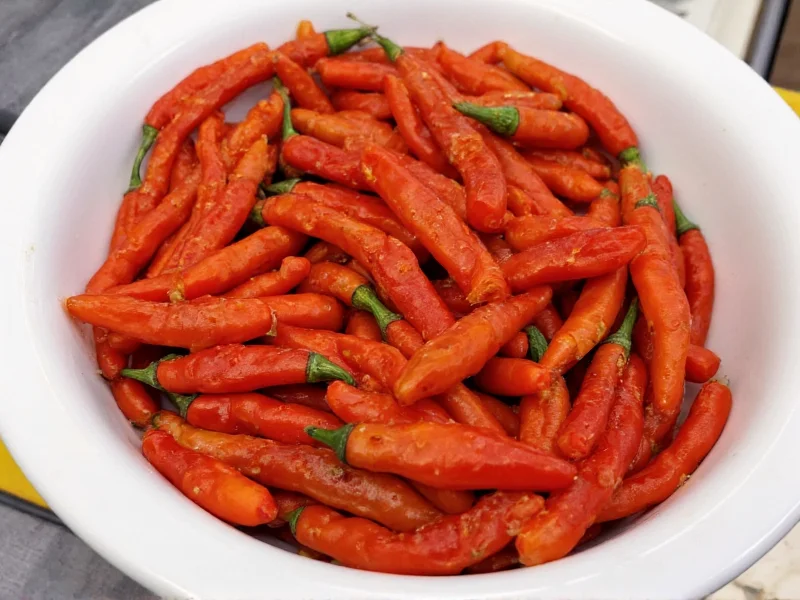Understanding Aleppo Pepper and Its Culinary Significance
Aleppo pepper (also known as Halaby pepper) originates from Syria and Turkey, where it has been used for centuries in regional cooking. This deep red chili flake offers a distinctive flavor profile—mild heat (about half the spiciness of cayenne pepper) with subtle fruity, tangy notes and a hint of saltiness from the traditional curing process.
Traditional Culinary Applications
Chefs value Aleppo pepper for its ability to enhance dishes without overwhelming heat. Unlike many chili flakes, it provides complex flavor rather than just spiciness. Here are the most common authentic aleppo pepper uses across various cuisines:
Middle Eastern Dishes
In its native region, Aleppo pepper appears in numerous traditional preparations:
- Hummus and baba ghanoush: A light sprinkle on finished dips creates visual contrast and flavor depth
- Mana'eesh (flatbread): Mixed with olive oil and za'atar as a topping before baking
- Kibbeh and kebabs: Incorporated into meat mixtures for subtle warmth
- Fattoush salad: Added to the dressing for complexity
- Mujadara (lentil and rice dish): Sprinkled on top as a finishing touch
Mediterranean and International Adaptations
Chefs worldwide have adopted Aleppo pepper for various applications beyond its traditional uses:
| Dish Category | Specific Aleppo Pepper Uses |
|---|---|
| Breakfast foods | Scrambled eggs, avocado toast, and breakfast potatoes |
| Pizza and flatbreads | After baking as an alternative to red pepper flakes |
| Seafood | Rub for grilled fish or shrimp before cooking |
| Vegetable preparations | Tossed with roasted carrots, cauliflower, or Brussels sprouts |
| Sauces and dressings | Added to vinaigrettes, aioli, and yogurt sauces |
Practical Tips for Using Aleppo Pepper
When incorporating Aleppo pepper into your cooking, consider these professional recommendations for optimal results:
Timing Matters
Add Aleppo pepper toward the end of cooking or as a finishing spice. Its delicate flavor compounds break down with prolonged heat exposure. For best results, sprinkle it on dishes just before serving to preserve its distinctive fruity notes.
Proper Measurement
Unlike cayenne or standard red pepper flakes, Aleppo pepper delivers milder heat. Most recipes call for 1/4 to 1/2 teaspoon per serving. Start with less—you can always add more after tasting. Remember that the salt content in some commercial blends affects overall seasoning.
Creative Aleppo Pepper Uses Beyond Seasoning
Innovative cooks have discovered additional applications that showcase this versatile spice:
- Compound butter: Mix with softened butter, lemon zest, and herbs for steak or fish
- Marinades: Combine with olive oil, garlic, and lemon juice for meats
- Infused oils: Steep in high-quality olive oil for salad dressings
- Baked goods: Add to savory scones, crackers, or breadsticks
- Cocktail rims: Blend with salt for Bloody Mary or michelada glasses
Substituting Aleppo Pepper When Unavailable
When you can't find authentic Aleppo pepper, these substitution options maintain similar flavor profiles for traditional aleppo pepper uses:
The ideal substitute combines mild heat with fruitiness. A blend of 1 part smoked paprika to 1 part cayenne pepper (reduced to 1/2 part for milder heat) comes closest to replicating Aleppo pepper's distinctive character. Some cooks prefer combining ancho chili powder with a pinch of salt and lemon zest to mimic the complex flavor.
Common but less accurate substitutes include standard red pepper flakes (use half the amount) or crushed Maras pepper from Turkey, which shares similar mild heat characteristics.
Storage Recommendations for Maximum Freshness
To preserve Aleppo pepper's delicate flavor compounds and vibrant color:
- Store in an airtight container away from light and heat
- Keep in a cool, dark pantry location (not above the stove)
- Use within 6-8 months for optimal flavor (though safe indefinitely)
- Consider freezing for long-term storage (up to 1 year)
Properly stored Aleppo pepper maintains its distinctive flavor profile longer than many other dried spices due to its natural oil content.
Finding Quality Aleppo Pepper
When sourcing authentic Aleppo pepper, look for these quality indicators:
- Deep brick-red color (not bright red or brown)
- Flakes with visible oil sheen
- Packaged with minimal additives (some include salt and citric acid)
- Origin information specifying Syria, Turkey, or Lebanon
Reputable spice companies often provide harvest dates and sourcing information, which helps ensure freshness for optimal aleppo pepper culinary uses.











 浙公网安备
33010002000092号
浙公网安备
33010002000092号 浙B2-20120091-4
浙B2-20120091-4